 W
WAeoliscus strigatus, also known as the razorfish, jointed razorfish or coral shrimpfish, is a member of the family Centriscidae of the order Syngnathiformes. This unique fish adopts a head-down tail-up position as an adaptation for hiding among sea urchin spines. The razorfish is found in coastal waters in the Indo-West Pacific. Its natural habitat includes beds of sea grass and coral reefs, where sea urchins are found.
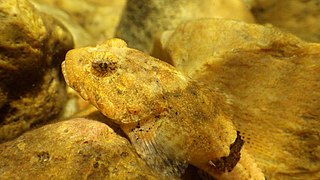 W
WThe banded sculpin is a freshwater fish dwelling mostly in small to moderate sized streams in areas of swift current. Young and juvenile C. carolinae can mainly be found in pools, riffles, and other shallow habitats while adults tend to prefer deeper waters. Mating and nesting for the sculpin is in spring, with males carefully guarding the eggs until they hatch.
 W
WBatrachomoeus trispinosus, the three-spined frogfish or Broadbent's frogfish, is a species of Indo-Pacific toadfish, from the largely Old World subfamily, Halophryninae, of the family Batrachoididae. It is the type species of the genus Batrachomoeus.
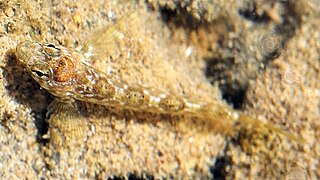 W
WBellapiscis medius,, the twister, is a triplefin fish of the family Tripterygiidae, commonly found around the coast of New Zealand. Its length is between 5 and 10 cm.
 W
WThe black musselcracker is a South African species of marine fish in the family Sparidae. It is the only species of its genus Cymatoceps. It reaches 1.5 m in length and almost 35 kg (77 lb) in weight. It is found in coastal rocky areas to depths of 80 m (260 ft), and feeds on hard-shelled invertebrates such as crabs and sea urchins.
 W
WThe Cape horse mackerel is a mackerel-like species in the family Carangidae. It is a pelagic species of the south eastern Atlantic Ocean which is a target of fisheries, mainly as bycatch.
 W
WThe Caribbean lanternshark is a shark of the family Etmopteridae found in the eastern and western Atlantic at depths between 180 and 720 m. Its length is up to 50 cm.
 W
WThe Caribbean sharpnose shark is a requiem shark, and part of the family Carcharhinidae. It is found in the tropical waters of the western Atlantic Ocean and the Caribbean, between latitudes 28° N and 40° S, from the surface to a depth of 500 m. It can reach a length of about 1.1 m.
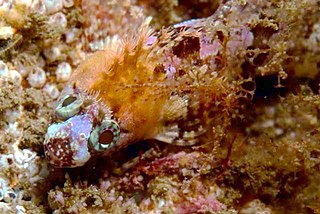 W
WClinus nematopterus, the Chinese klipfish, that occurs in subtropical waters of the Atlantic Ocean where, despite its common name, it is endemic to South Africa, the common name having derived from a locality error in the original description. This species can reach a maximum length of 11 centimetres (4.3 in) TL. This species feeds on benthic crustaceans and also takes other fishes.
 W
WThe doubleband surgeonfish or lieutenant tang, is a marine ray-finned fish in the family Acanthuridae. It is found in the tropical and sub-tropical Indo-Pacific region and grows to a maximum length of 31 cm (12 in).
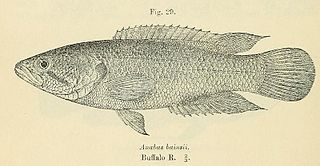 W
WThe Eastern Province rocky, also known as rocky kurper, is a species of fish in the family Anabantidae. It is endemic to South Africa.
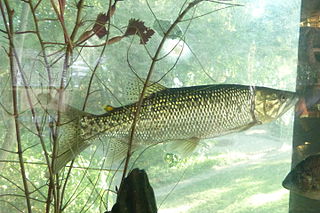 W
WHepsetus cuvieri, sometimes known as the African pike or Kafue pike characin, is a predatory freshwater fish found in southern Africa. This species was described in 1861 by the French naturalist Francis de Laporte de Castelnau.
 W
WHeteroclinus roseus, the Rosy weedfish, is a species of clinid native to the Pacific Ocean coasts around Japan, Australia and Polynesia where it lives in coastal belts of seaweed. This species can reach a maximum length of 15 centimetres (5.9 in) TL.
 W
WHydrocynus vittatus, the African tigerfish, tiervis or ngwesh is a predatory freshwater fish distributed throughout much of Africa. This fish is generally a piscivore but it has been observed leaping out of the water and catching barn swallows in flight.
 W
WIstiblennius bellus, the imspringer, is a species of combtooth blenny found in coral reefs in the Pacific and western Indian ocean. It is also known as the beautiful rockskipper or the dusky blenny. Males of this species can reach a maximum of 16 cm (6.3 in) SL, while females reach a maximum of 13.1 cm (5.2 in) SL.
 W
WPomatoschistus knerii, Kner's goby, is a species of goby native to the western basin of the Mediterranean Sea and the Adriatic Sea. This species occurs in areas with soft substrates near to rocks or beds of seagrass. The specific name most likely honours the Austrian ichthyologist Rudolf Kner (1810-1869), who was a friend of the author Franz Steindachner.
 W
WLiopropoma rubre, the peppermint bass or swissguard basslet, is a species of marine ray-finned fish, related to the groupers and classified within the subfamily Epinephelinae of the family Serranidae. It is found in the western Atlantic Ocean. This species is utilised in the aquarium trade.
 W
WMacrognathus siamensis is a tropical fish belonging to the family Mastacembelidae.
 W
WMerluccius capensis is a ray-finned fish in the genus Merluccius, found in the south-eastern Atlantic Ocean, along the coast of South Africa. It is a long, lean fish with a large head, similar in appearance to the European hake and the deep-water Cape hake. By day, it lives close to the bottom on the continental shelf and upper slope at depths not usually exceeding 400 m (1,300 ft); it makes a large, daily vertical migration rising at night to feed in the nectonic zone, and it also migrates southwards in spring and northwards in autumn. It is an important commercial fish species in southern Africa.
 W
WThe moonlight gourami, also known as the moonbeam gourami, is a labyrinth fish of the family Osphronemidae native to Indochina. This peaceful, attractive species is a popular aquarium fish.
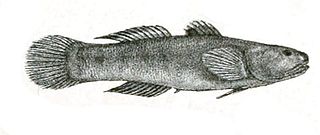 W
WMugilogobius platynotus, commonly known as the flatback mangrove goby, is a species of goby native to eastern Australia.
 W
WThe northern redbelly dace is a freshwater cyprinid fish, generally found in lakes and small streams in the northeastern United States and eastern Canada. Ranging from 1-30 inches, it is one of forty-four species from the minnow and Carp family of Cyprinidae in these areas.
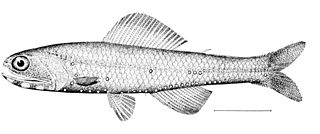 W
WNotoscopelus kroyeri, commonly known as the lancet fish, is a species of lanternfish in the family Myctophidae. It is endemic to the North Atlantic Ocean where it is found in deep water habitats, spending its day at great depths and its night near the surface. It was previously regarded by some authorities as being a subspecies of Notoscopelus elongatus; one of the differences between the two being that N. elongatus has 25 or fewer gill rakers while N. kroyeri has 26 or more.
 W
WThe oceanic whitetip shark, also known as Brown Milbert's sand bar shark, brown shark, lesser white shark, nigano shark, oceanic white-tipped whaler, and silvertip shark, is a large pelagic requiem shark inhabiting tropical and warm temperate seas. Its stocky body is most notable for its long, white-tipped, rounded fins.
 W
WOreochromis andersonii, the three-spotted tilapia, threespot tilapia, or threespot bream, is a species of cichlid native to Africa, where it is found in rivers and swamps in the southern half of the continent. This species reaches a length of 61 cm (24 in). It is important to local commercial fisheries, as well as being commercially farmed. It is also popular as a gamefish. The identity of the person honoured in the specific name of this fish is not known but it is though most likely to be the Swedish explorer and hunter Charles John Andersson (1827-1867) who explored much of Namibia where the type was collected.
 W
WOxyjulis californica is a species of wrasse native to the eastern Pacific Ocean along the coasts of California and Baja California. Its distribution extends from Salt Point in Sonoma County, California, to southern central Baja California, near Cedros Island. It is a very common species; its common name in Spanish is señorita.
 W
WPachypanchax omalonotus, the powder-blue panchax, is a species of Aplocheilid killifish endemic to Madagascar where it is found on the island of Nosy Be and in the Sambirano River basin and adjacent streams on the mainland. Its natural habitat is rivers.
 W
WThe Pacific spiny lumpsucker is a species of bony fish in the family Cyclopteridae.
 W
WParaplesiops bleekeri, commonly known as the eastern blue devil, blue-tipped long-fin or Bleeker's blue devil fish, is a species of fish in the family Plesiopidae. This colourful, secretive fish is endemic to Australia, where it is a protected species.
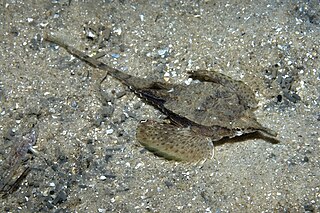 W
WPegasus lancifer, the sculptured seamoth, is a species of fish in the family Pegasidae which is endemic to the temperate seas of southern Australia and Tasmania. They are known to gather in large numbers in the shallows of estuaries. Individuals can bury themselves in the sediment and change colours to camouflage them. The male & female spawn as a pair, swimming with their vents touching around a 1 metre (3.3 ft) above the substrate, while the eggs and sperm are released. After spawning the pair separates and the eggs begin a pelagic phase.
 W
WPonticola kessleri, the bighead goby or Kessler's goby, is a species of goby native to Eurasia. The bighead goby is a Ponto-Caspian relict species. It inhabits the fresh and oligohaline waters, with mineralisation from 0-0.5‰ up to 1.5-3.0‰.
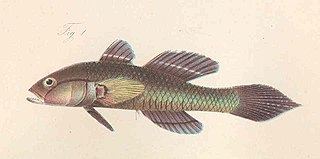 W
WPorogobius schlegelii is a species of goby native to brackish and fresh waters along the Atlantic coast of Africa from Senegal to the Democratic Republic of the Congo. It is also found in the islands of the Gulf of Guinea and Cape Verde. It occurs in inshore waters in lagoons, estuaries, the lower reaches of rivers and mangrove swamps. This species grows to a length of 14.9 centimetres (5.9 in) TL. This species is the only known member of its genus. The specific name honours the ichthyologist Hermann Schlegel (1804-1884) who supplied Günther with the type specimen from the Natural History Museum in Leiden.
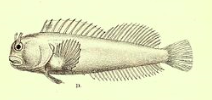 W
WRhabdoblennius nitidus, the barred-chin blenny, is a species of combtooth blenny found in coral reefs in the western Pacific ocean. This species reaches a length of 8.3 centimetres (3.3 in) SL.
 W
WThe sand grey mullet is a species of mullet found in coastal marine waters of Australia.
 W
WThe scaly yellowfish, or KwaZulu-Natal yellowfish, is a species of freshwater fish in the family Cyprinidae.
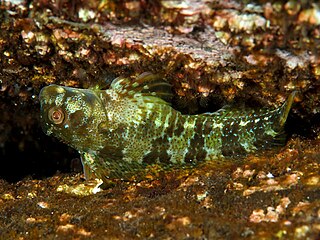 W
WScartella emarginata is a species of combtooth blenny found in the Indian ocean. This species reaches a length of 10 centimetres (3.9 in) SL.
 W
WScarus forsteni, commonly known as the whitespot parrotfish, or Forsten's parrotfish, is a marine fish native to tropical areas in the western Pacific Ocean, where it lives in coral reefs and feeds on benthic algae.
 W
WThe Shokihaze goby is a species of goby native to marine and brackish waters along the coasts of eastern Asia. It has also been introduced to the San Francisco Bay in California, United States. This species can reach a length of 5.2 centimetres (2.0 in) SL.
 W
WThe small-scale whiting, is a species of inshore marine fish of the smelt-whiting family Sillaginidae. The small-scale whiting is very similar in body shape and colour to other species in the genus Sillago, but is distinguished by having 12 or 13 spines in the first dorsal fin compared to 11 in all other species. The species is distributed through parts of the west Pacific Ocean including Japan, Taiwan, Korea and India, inhabiting the tidal flats of major estuaries. It is a benthic predator taking crustaceans, molluscs and annelids. Spawning in the species takes place from May to September, with peaks identified in June and July. The eggs and larvae have been extensively studied in order to distinguish them from the more abundant Sillago sihama. Minor fisheries exist for the small-scale whiting, although it is thought be endangered by habitat loss and pollutionIUCN.
 W
WThe southern pygmy perch, also known as the Tasmanian pygmy perch, is a species of freshwater ray-finned fish, a temperate perch from the family Percichthyidae which is native to southeastern Australia and Tasmania.
 W
WThe spotfin surfperch is a species of ray-finned fish from the surfperch family Embiotocidae. It occurs along the western coast of North AMerica from Oregon to Baja California where it occurs in waters down to 101 metres (331 ft). It is viviparous and grows to a total length of 20 centimetres (7.9 in).
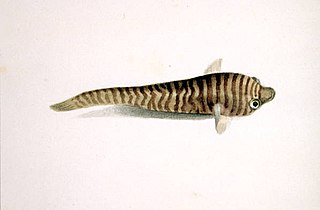 W
WThe Tasmanian clingfish is a clingfish of the family Gobiesocidae, found around the western and southern coasts of Australia including Tasmania. Its length is up to 8 cm. This species is found in shallow, coastal, rocky reefs and in the intertidal zone. It is also encountered by scuba divers beneath piers and jetties.
 W
WThalassophryne maculosa, the Cano toadfish, is a species of toadfish which is common along the Caribbean coasts of South America from Colombia to Trinidad and Venezuela. It occurs on the sandy bottoms of reef flats, lagoons, and seaward edges of reefs where it sits partially buried in the substrate. It is a venomous species with the venom being delivered through spines and wounds from the spines have been known to cause severe symptoms of pain and illness that may persist for up to a week. A study of the holotype of Batrachus uranoscopus, said to be a freshwater toadfish from Madagascar, in the Muséum national d’Histoire Naturelle in Paris found that it was most probably a misslabelled specimen of Thalassophryne maculosa and that subsequent records of Batrachus uranoscopus were attributable to Allenbatrachus meridionalis, a species found in Madagascar. T. maculosa is the type species of the genus Thalassophryne, the generic name translates from Greek as "sea toad" while the specific name is Latin for "spotted".
 W
WAetapcus maculatus, the warty prowfish, is a species of Australian prowfish endemic to the coastal waters of southern Australia where it inhabits mostly rocky reefs. This species grows to a length of 21 centimetres (8.3 in) TL. This species is the only known member of its genus.